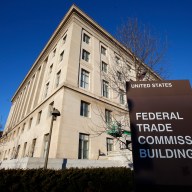BISMARCK, N.D. – Secretary of State Condoleezza Rice is being asked to intervene in water disputes between North Dakota and Canada.
The Northwest Area Water Supply Project and the Red River Valley Water Supply Project would divert Missouri River water to northwest and eastern North Dakota. Canadian officials object to both projects, fearing invasive species might enter Canadian waters.
Senator Byron Dorgan (D-N.D.) said the water treatment plans in both projects are adequate. He said the disputes with Canada have dragged on for too long.
“We need to have direct consultation between our Department of State and the federal government of Canada,” Dorgan said.
He sent a letter to Rice on Friday and will seek a meeting with her in the coming weeks, he said.
The U.S. Bureau of Reclamation has conducted environmental studies on both water projects. For the Red River Valley project, the bureau recommends a pipeline from the McClusky Canal, which links with Lake Audubon on the Missouri River in central North Dakota. The proposal includes a $110 million treatment plant next to the canal to reduce the risk of transferring invasive species into Canadian waters.
The secretary of the interior must still sign off on the idea, and Congress must still help fund it. Opponents could challenge it in court.
Canadian Ambassador Michael Wilson, in a letter to Interior Secretary Dirk Kempthorne last month, objected to the transfer of water between the Missouri River and Hudson Bay basins. In the eastern part of the state, Missouri River water would be diverted into the Red River, which runs north into Canada’s Hudson Bay watershed.
“An inter-basin diversion is an option that presents a high risk of transboundary harm,” Wilson said in the letter.
The Canadian province of Manitoba has sued over the Northwest Area Water Supply Project, which has been under construction since 2002. Only construction unrelated to treatment can continue with a judge’s permission until officials resolve how much Missouri River water treatment is necessary to ensure Canadian waters are not harmed.
Preliminary findings of a court-ordered environmental study say NAWS, which would bring water to the northwestern part of the state, poses little risk to Canadian waters under any treatment option. Officials at the Canadian Embassy in Washington say they are still analyzing the report.
Dorgan said he believes it will take more than federal government engineers to convince Canada that the two water projects pose no harm north of the border.
“The Bureau of Reclamation is not an agency involved in diplomacy,” he said.
Dorgan said the federal government is obliged to lobby for the projects because of promises made when the Garrison Dam, built on the Missouri River, flooded North Dakota land.
“In return, we would be able to move water throughout our state for our municipal, rural and industrial water needs, as well as for irrigation opportunities,” Dorgan wrote in his letter.
–
On the Net:
Bureau of Reclamation studies: www.usbr.gov/gp/dkao
















